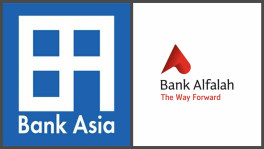Traffic in Dhaka City: Can PPP be the solution?
Through a thorough assessment of national and international best practices, public entities should start developing PPP-based projects by considering local circumstances to improve standard of living and to increase trade

Dhaka's traffic congestion has exceeded the limit of tolerance. The most populated city in the South and South-East region, Dhaka is home to around 11.2 percent of the country's population, resulting in overcrowding. The endemic congestion in the city is increasingly hampering trade and commerce. Leaving home for work means encountering traffic. Because of traffic, students are also having difficulty keeping up with their class schedules.
Moreover, it also contaminates our environment by causing sound and air pollution as a result of a large number of automobiles gathered densely in one particular area at a time. Dhaka's average traffic speed is currently 6.4 kilometres per hour (kph). However, if the present car growth rate continues, without significant public transportation investment, the average speed might drop to 4.7 kph by 2035, which is about the same as walking.
The question being raised constantly is why the traffic problem is not being managed in a sustainable manner. Transport analysts point to two main contributing factors - lack of planning and preparation in earlier decades, and an over-reliance on cars due to a defective public transit infrastructure. Even though there are 33 times more cars in the city than buses, the former only account for 13% of passenger transportation, while the latter bears the brunt of the remaining 49%.
Dhaka might be the only city in the world where no direct public transport services are available. Almost every mega city in the world has intervention by the city government which runs public transport and mobility services to manage and control the urban transport system in every mode, whether it may be Bus Rapid Transit (BRT) or Mass Rapid Transit (MRT).
Running public services, especially in urban transport, demands high expenditure. A government may plan it meticulously, covering all aspects, and still not be able to finance it fully. It has to find alternative ways to resolve the problem. One of the optimum alternatives to supplement public financing is Public-Private Partnership (PPP), which may provide the best solution to this financial constraint.
In that case, public authorities must develop a comprehensive policy response that includes integrated urban policies, long-term funding sources that are more efficient and profitable, and new public transportation services that give high-quality mobility options.
Delivery of urban transport schemes requires a robust public body in an authoritative position who will be solely responsible for coordinating inter-jurisdiction across the urban conurbation, ensure rights of way, take hold of project delivery, monitor contract compliance, and enforce service standards.
The utilisation of public-private partnerships intensifies these requirements by exposing and quantifying related risks insofar as they relate to the precise composition of the transport network under PPP delivery. Under a stable revenue structure and operating environment, PPP projects can successfully deliver fruitful projects by capitalising on the private sector's ability and contracted incentives to supply efficient and sustainable transport services.
Now, let us look at how PPPs can deliver the desired urban public transport services through the PPP mechanism in the context of Bangladesh.
- Cities around the world are increasingly using rail transit - Light Rapid Transit (LRT) & Metros (MRT) - to solve urban transportation problems. Bangladesh is currently developing MRT through public financing and in the traditional procurement method. This can be supplemented by harnessing private sector financing and expertise.
- Bus Rapid Transit (BRT) in different routes can be operated under the PPP model. It will definitely provide a better transport service as proven in our neighbouring countries. Currently, there is only one BRT project being constructed from Airport Railway Station to Gazipur. We need more projects like this one. It is also noteworthy that the Dhaka Chaka, Gulshan Chaka and Hatirjheel Circular Bus have been very effective and popular in those specific areas.
- Elevated Expressway (EE) and flyovers are very effective in every terrain for covering long distance commute around the city. We have seen the success of Mayor Hanif Flyover in terms of reducing traffic congestion in southern Dhaka. Dhaka is also currently developing its very first EE from Airport to Chittagong Road, of which the 1st tranche from Airport to Tejgaon is going to be operational this year.
- Subway network is another way of providing public services through private management and operation. Subways have been a proven mechanism around the world to reduce the burden of the people during transportation.
- Trams have also been a successful PPP project model around the globe. Australia and Europe are the perfect examples of success in trams management under PPP. Dhaka currently does not have any trams facilities.
- The waterway transport model is also popular within the PPP framework. Dhaka is currently running boat services over Hatirjheel, which is also a model of private involvement.
These projects in urban mobility require a significant amount of investment. The Government of Bangladesh has already taken many PPP initiatives to reduce traffic pressure in Dhaka city. It has planned two ways to do this—first, by implementing projects which divert traffic from entering Dhaka city and second, by taking up internal projects to transit mass people.
The external projects include Dhaka Bypass PPP project, which is under construction, and the Rampura-Amulia-Demra Expressway construction, which is underway. Planning is also in progress to divide the Gabtoli-Savar-Nabinagar highway into a 10-way highway.
The internal projects include MRT Line-2, which will be managed through PPP, Dhaka Outer Circular/Ring Road, Dhaka East-West Elevated Expressway, Circular Railway Around Dhaka City, Multimodal Transport Hub at Kamalapur Railway and Biman Bandar Railway Stations, Transit-Oriented Development (TOD) at Tejgaon Rail Station. The feasibility study of Dhaka Subway is also completed and investors from the developed countries have proposed to the government for it to be implemented under PPPs.
If these projects are implemented in time with the financing and managerial assistance from private sectors, we can hope that we will be able to reap their benefits and lead a comfortable life, in relation to public transportation in our capital. Besides, city planners and transport specialists have to come up with further innovative solutions that reduce traffic congestion in Dhaka along with its travel time, and improve the standard of living in Dhaka as a whole.
It must be noted that, to be successful in PPP in the transport sectors, especially in the urban region, few things have to be ensured for realising its benefits - such as policy and planning coordination among the agencies and authorities in Dhaka, land availability, rule of law, interface among the different modes of the transport system, fare controls and affordability mechanism, subsidies, capacity to handle the projects and proper contract management by the public bodies.
Improvements in urban infrastructure are crucial to enhance both standard of living and productivity. Developing mass transit solutions for the urban population is particularly an important element of this. Assessments of national and international best practices, considering local circumstances, and consultations with municipal and personal stakeholders need to be prioritised to tackle this major problem.
The general public entities should immediately come to the fore for developing PPP-based projects in urban transport. If successful, these projects will work as a point of reference to be used in other cities and across the country, for project development and for ensuring economic development and sustainability.

A. M. Al-Amin is a PPP Specialist and PPP Authority working for the Prime Minister's Office
Disclaimer: The views and opinions expressed in this article are those of the author and do not necessarily reflect the opinions and views of The Business Standard.


 Keep updated, follow The Business Standard's Google news channel
Keep updated, follow The Business Standard's Google news channel
















